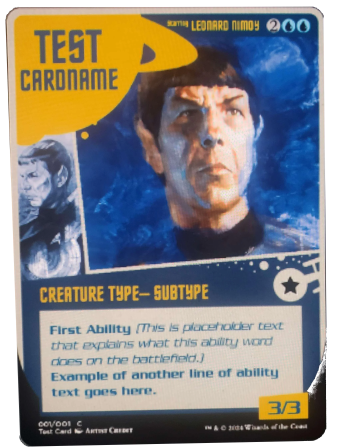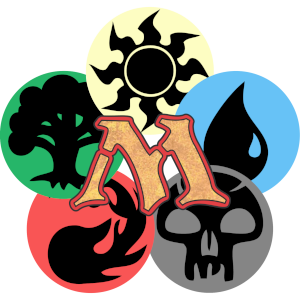
Serendipitously, you might have come across whispers of a Magic: The Gathering / Star Trek crossover that promises exciting new gameplay and iconic characters. However, this intriguing notion is actually a clever fabrication by a New Jersey MTG store aiming to boost card sales. While the idea sparks imagination and excitement, the crossover is not an official collaboration. Still, understanding this story helps you appreciate how marketing creativity influences the gaming community and keeps the Magic universe vibrant.
The New Jersey Store’s Ambitious Marketing Strategy
You might be intrigued to know that the rumored Magic: The Gathering and Star Trek crossover was actually a clever marketing ploy by a New Jersey MTG store. To boost card sales during a slow season, the store fabricated the crossover idea, generating buzz and excitement among players. This inventive strategy aimed to attract both Magic and Star Trek fans, hoping to increase foot traffic and purchases, even though the crossover was never officially planned or released.
The Role of Social Media in Amplifying the Myth

Your social media feeds played a huge role in turning the New Jersey store’s fake crossover into a widely believed rumor. Online platforms allowed rapid sharing, sparking discussions and fan theories that gave the story more visibility than the store anticipated. As a result, many Magic and Star Trek enthusiasts were drawn into the excitement, unknowingly spreading the misinformation further.
Beyond just spreading the initial rumor, social media acted as an echo chamber, where fan-created content, memes, and speculative posts magnified the idea of a Magic: The Gathering / Star Trek crossover. Influencers and niche community groups enthusiastically debated potential card mechanics and character choices, lending an air of legitimacy to the false announcement. You can see how quickly and broadly a single creative marketing stunt can evolve into a widely believed narrative when social media conversation fuels it.
Analyzing Themes and Lore: What Could Have Been
If you’ve ever imagined the rich lore of Magic: The Gathering merging with the expansive Star Trek universe, the possibilities are intriguing. You could have seen planeswalkers exploring the Federation’s ideals or Starfleet officers wielding powerful spells. The narrative blend of interstellar diplomacy and mystical forces might have created a unique storytelling experience, balancing science fiction with fantasy. Unfortunately, this exciting concept was nothing more than a marketing ploy, leaving fans to wonder what fascinating crossovers might arise if such worlds ever truly collided.
Fan Reactions: Enthusiasm vs. Skepticism

When news surfaced about a potential Magic: The Gathering and Star Trek crossover, you likely felt the thrill of a dream collaboration. Fans showed enthusiastic support online, imagining deck themes and character cameos. At the same time, skepticism spread quickly after learning the announcement originated from a New Jersey MTG store’s marketing stunt. This contrast highlighted how easily a creative idea can spark hope and doubt, demonstrating your community’s passion and cautious nature around crossover announcements.
The fan reactions to the Magic: The Gathering / Star Trek crossover reveal a fascinating dynamic. Many of you expressed excitement, sharing fan art and speculative deck builds, eager to merge two beloved franchises. Yet, the reveal that the crossover was a fabricated idea by a New Jersey store to boost card sales shifted the mood. Some appreciated the clever marketing, while others felt disappointed by the false hope. This mix of enthusiasm and skepticism shows how hungry you are for new content, but also how important it is to verify news before fully investing emotionally.
How Rumors Spread in Gaming Communities
You might have noticed how quickly rumors like the Magic: The Gathering and Star Trek crossover circulate within gaming circles. These whispers often start in small communities or local stores and gain momentum through social media and word of mouth. In this case, a New Jersey MTG store created the false crossover idea to boost sales, but once shared, it spread far beyond its origin. When you’re part of these communities, it’s easy to see how such stories, even if untrue, can feel believable and gain rapid traction.
The Impact of FOMO (Fear of Missing Out) on Purchases
When you hear about limited or special crossover products, your fear of missing out can heavily influence your buying choices. The Magic: The Gathering/Star Trek rumor played on this, encouraging gamers to rush into purchases to avoid being left out. Retailers often exploit this emotional trigger to increase sales, and you might find yourself making impulsive decisions based on these pressures rather than the actual availability or existence of products.
Your FOMO can drive significant spending, especially in gaming communities where exclusive releases or collaborations are highly anticipated. Even when a crossover turns out to be a marketing ploy, like the fabricated Magic: The Gathering and Star Trek idea. You still feel compelled to act quickly. This fear of missing a unique opportunity makes you more vulnerable to hype, demonstrating how powerful psychological triggers shape your consumer behavior beyond pure product interest.
Tracking Sales Numbers: What the Data Really Shows
When you examine the sales figures from the period of the supposed Magic: The Gathering and Star Trek crossover, you’ll notice a spike in card purchases at that New Jersey store. However, this increase was temporary and isolated, indicating the crossover was more of a clever marketing ploy than an actual collaboration. The data suggests that while the sensational idea generated buzz, it did not sustain long-term sales growth outside this localized spike.
Consumer Behavior: Motivations Behind Impulse Buys
You might wonder why this fake crossover caused such a surge in purchases. The limited-time gimmick played on your enthusiasm and curiosity, tapping into your desire to own something unique and exclusive. This motivated you and other players to make spontaneous buying decisions, driven more by the novelty and excitement than by the actual value or authenticity of the cards involved.
Delving deeper into consumer behavior, you can see that impulse buys often hinge on emotional factors, such as fear of missing out (FOMO) and instant gratification. When the New Jersey store introduced the false crossover, you were likely influenced by the idea of grabbing rare items before they disappeared. This reaction is common in hobby markets like Magic: The Gathering, where exclusive editions or unique themes often create a short-lived buzz that dramatically affects your purchasing choices, even if the underlying product isn’t genuinely tied to a popular franchise like Star Trek.
Imagining Gameplay Mechanics: Potential Game Features
You might envision combining Magic: The Gathering’s intricate strategy with Star Trek’s futuristic themes by introducing unique mechanics like starship battles or Federation alliances. Imagine new phases centered around exploration or diplomacy, blending MTG’s mana system with Starfleet command points. Although this concept is purely speculative, it would allow players to navigate space conflicts and ethical dilemmas, adding fresh layers to their gameplay experience.
Hypothetical Cards: Bridging the Universes
Picture cards featuring iconic Star Trek characters reimagined as planeswalkers or legendary creatures, bringing their distinctive abilities to your decks. You could wield Captain Kirk’s leadership or Spock’s logic as powerful spells to outsmart opponents. These hypothetical cards would merge the narrative depth of Star Trek with MTG’s strategic complexity, crafting a unique blend of storytelling and competition for your collection.
Delving deeper into these hypothetical cards, you’d find a rich variety inspired by Star Trek’s rich lore. For example, “Klingon Warship” might be an artifact with aggressive combat stats, while “Vulcan Logic” could be an instant spell enhancing card draw or defense. You would also see factions like the Borg represented as relentless, evolving threats with abilities mimicking their assimilation tactics. This blending would open creative deck-building options, allowing you to explore both universes’ themes, though all this excitement stems from a creative marketing idea by a New Jersey Magic store, rather than an actual collaboration. # The Magic: The Gathering / Star Trek Crossover: Debunking the Rumor. For a while, Magic: The Gathering fans were buzzing about a potential crossover with the iconic Star Trek universe. Exciting images and supposed spoilers circulated online, fueling hope that your favorite card game would soon feature legendary Starfleet characters and alien species. However, the truth behind this rumor is far more mundane—and clever—than you might think. The idea of a Magic: The Gathering and Star Trek crossover never actually existed as an official project. Instead, it was a creative marketing stunt devised by a small MTG store in New Jersey aiming to invigorate local enthusiasm and increase card sales. By fabricating detailed fake spoilers, card designs, and promotional materials, this store successfully created buzz within the MTG community, drawing attention and foot traffic. Though no official collaboration ever materialized, the stunt underscored the passion and creativity within the Magic player base. It also highlighted how closely intertwined pop culture and fandoms can be, driven by community excitement and imaginative storytelling. As much as you might have hoped to see Captain Kirk dealing damage or a Klingon warrior with unique abilities, the Magic x Star Trek concept lives on only as an inventive piece of fan-driven legend.
Summing up
Following this, you now know that the Magic: The Gathering / Star Trek crossover was not an authentic collaboration, but rather a clever marketing ploy by a New Jersey store. While it excited many fans, you should approach similar rumors with a critical eye. This story shows how creativity and community engagement can spark memorable moments, even if the crossover itself wasn’t real.


Leave a Reply